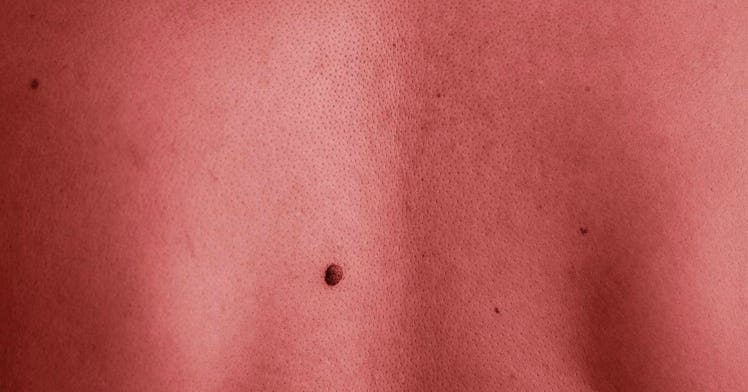I Almost Delayed My Skin Cancer Exam For Too Long. Don’t Do The Same.
If I could share one important lesson, it would be this: Please, get your skin checked annually. Don’t shrug off those oddly shaped formations; early detection is everything.

A few years ago, I was at the dermatologist’s office, naked except for a thin blue paper gown. There was a funky bump on my shoulder that needed examining. That bump turned out to be nothing. But, while I was there, the doctor noticed the spot on my foot that I never thought twice about, except when my wife would occasionally say, ‘Y
ou need to get that checked out!’ I would consistently shrug it off. The spot was a birthmark maybe or just an odd discoloration, I told the doctor. It was the size of a quarter, a swirl of different light and dark brown splotches, irregularly shaped, and not raised. I always assumed that skin cancer came in the shape of a round, raised mole. Besides, this spot was on my foot for as long as I could remember; I found photographic evidence of it six years prior. The doctor wanted to take a biopsy, but I refused. We had an upcoming family vacation to Scotland, I told her, where we would celebrate the New Year. I was willing to come back for a biopsy after returning from our trip, but I really didn’t want to walk around Scotland with an irritated foot. Her firm reply: Lay down. I’m getting that thing biopsied or I will not be able to sleep tonight.Melanoma is the fifth most common cancer among both men and women. And the number of new invasive diagnosed melanoma cases has increased annually by 44 percent. This year alone, the American Cancer Society estimates that 106,110 adults — 62,260 men and 43,850 women — will be diagnosed with invasive melanoma of the skin. About 7,180 people are expected to die of melanoma. According to The Skin Cancer Foundation, Men under the age of 49 have a higher risk of developing melanoma than any other cancer. Those aged 15 to 39 are 55 percent more likely to die of melanoma than women in the same age group.I was one of the men diagnosed. While on our family trip to Scotland, my phone was not receiving voicemail for some unknown technical or international reason. In hindsight, this was a blessing. But when we arrived back home, one of the many voicemails was a serious message from my doctor telling me to call her as soon as I could. Hearing in her tone, it wasn’t good news. The growth needed to be removed.The diagnosis was Melanoma T1A. I was able to schedule a surgery within a few weeks. The doctor and surgeon were surprised such a large spot did not metastasize and spread after all those years. Now, there is a melon ball crater, the diameter of a silver dollar, where the melanoma used to be. I was lucky.Unluckily, the surgeon hit and exposed a nerve during the surgery, which is still sensitive two years later. The pain I experienced during the weeks of recovery was blinding, searing, sweating pain. It was like nothing I hope I will ever have to feel again. But the human body is an incredible thing. From bed to couch to crutches to a cane, I began to heal.A few months after my surgery, I went to Paris for work and traveled there with a cane. I left it in the hotel room and limped home without it. I will never forget the relief and joy and gratitude I felt running on the treadmill a few weeks later. I still have a hideous and — thanks to a skin graft from my thigh and a follow-up plastic surgery — a slightly less gnarly purple-red battle scar hole in my foot. Every time I look at it, I’m reminded of the many important lessons I learned. If I could share one, it would be this: Please, get your skin checked annually as is recommended by The Skin Cancer Foundation. Don’t shrug off those oddly shaped formations; early detection is everything.
Kevin Kowalick is the father of two boys and a writer whose work explores men’s issues, wellness, authenticity in the corporate world, and more. He’s a VP at a Fortune Top 30 Media Company and a Trustee on the Board of the Academy of Natural Science in Philadelphia.